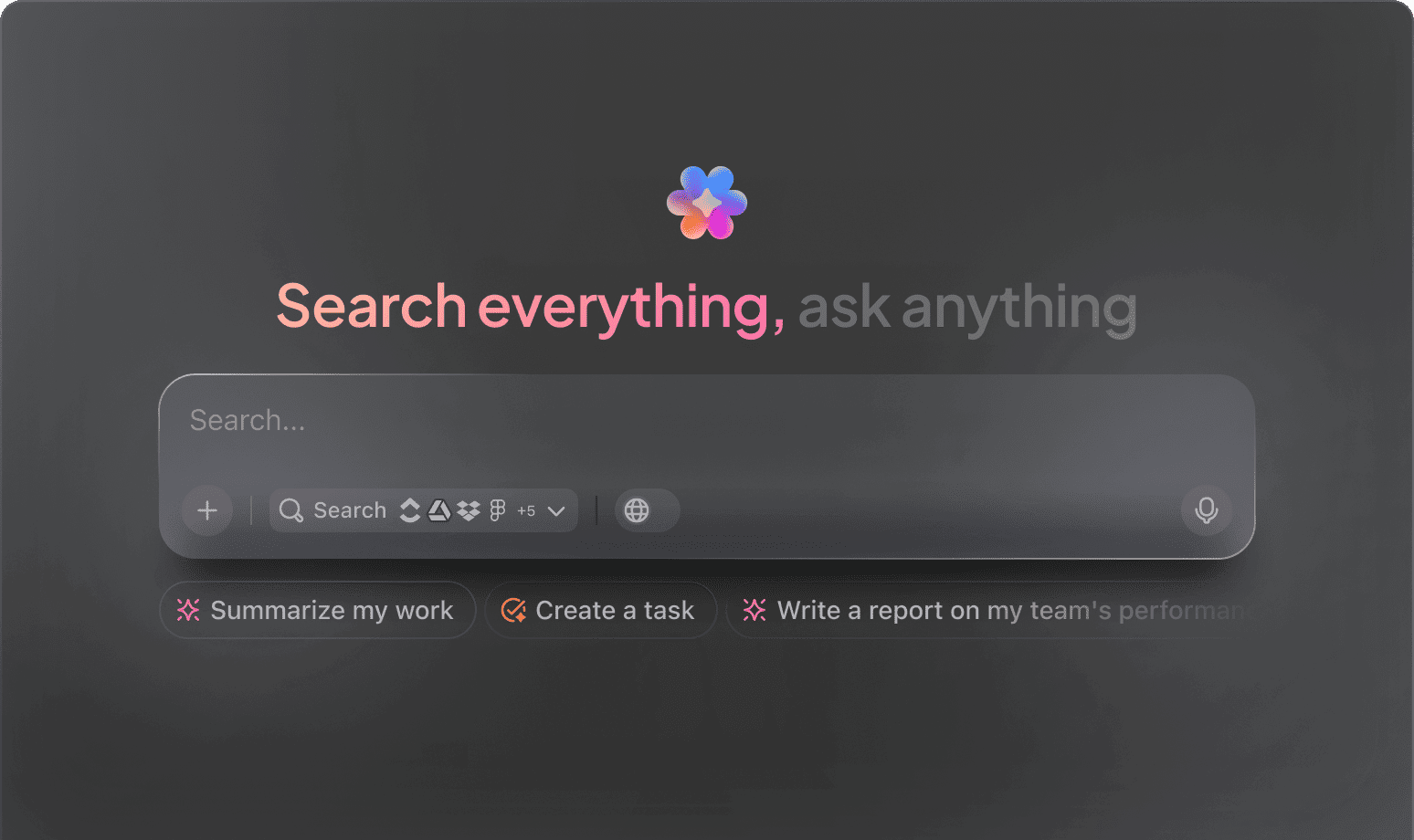AI Project Planning
Top AI Prompts for Adjusting Project Plans
Easily update timelines, reallocate resources, and keep your projects on track using ClickUp Brain's intelligent assistance.
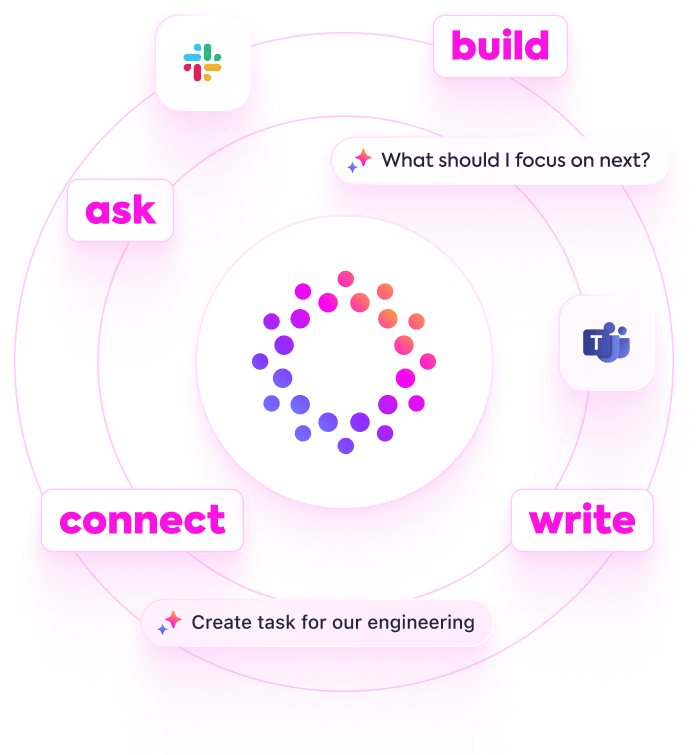
Trusted by the world’s leading businesses
AI Empowering Project Management
Harnessing AI Prompts to Refine Project Plans with ClickUp Brain
Adjusting project plans is more than shifting dates—it's about adapting strategies to meet evolving goals.
Project managers juggle shifting priorities, resource changes, and unexpected obstacles daily. Managing these complexities requires clarity and agility.
With AI prompts, teams can now:
- Quickly identify bottlenecks and resource gaps
- Generate updated timelines and task dependencies with ease
- Summarize stakeholder feedback and change requests
- Transform meeting notes into clear action items and priorities
Integrated seamlessly into familiar tools like docs, boards, and task lists, AI in platforms such as ClickUp Brain doesn’t just assist—it actively reshapes your project workflows into focused, manageable plans.
ClickUp Brain Compared to Conventional Solutions
Discover Why ClickUp Brain Stands Apart
ClickUp Brain integrates seamlessly with your workflow, understanding your context so you focus on progress instead of explanations.
Conventional AI Platforms
- Constantly toggling between apps to collect information
- Repeating project objectives with every query
- Receiving generic, irrelevant feedback
- Hunting through multiple platforms to locate a single document
- Interacting with AI that only processes input without insight
- Manually switching among different AI engines
- Merely another add-on in your browser
ClickUp Brain
- Deeply integrated with your tasks, documents, and team communications
- Retains your project history and objectives
- Provides insightful, context-driven recommendations
- Offers a consolidated search across all your resources
- Enables hands-free commands with Talk to Text
- Automatically selects the optimal AI model: GPT, Claude, Gemini
- Available as a native app on Mac & Windows designed for efficiency
Prompts for Project Plan Adjustments
15 Powerful AI Prompts for Adjusting Project Plans with ClickUp Brain
Enhance project agility—update timelines, resources, and scopes effortlessly.

Identify 5 alternative scheduling strategies for a software development sprint, based on the ‘Q3 Sprint Review’ document.
Use Case: Accelerates planning revisions using insights from previous sprint retrospectives.
ClickUp Brain Behaviour: Analyzes linked documents to extract key scheduling approaches and proposes new options tailored to your project.

What resource allocation trends are emerging for cross-functional teams in mid-sized projects?
Use case: Informs smarter distribution of team efforts aligned with current best practices.
ClickUp Brain Behaviour: Aggregates data from internal reports; Brain Max can supplement with relevant external benchmarks if accessible.

Draft a revised project scope summary emphasizing minimal viable product features, referencing ‘MVP Guidelines’ and prior project notes.
Use Case: Ensures all stakeholders share a clear, updated understanding of deliverables.
ClickUp Brain Behaviour: Extracts and organizes key points from linked materials to generate a concise scope document.

Compare timeline adjustments between the original plan and the latest update using the ‘Project Timeline Q2’ document.
Use Case: Facilitates quick identification of schedule shifts without manual review.
ClickUp Brain Behaviour: Processes tabular and narrative data to deliver a summarized comparison highlighting critical changes.

List top risk factors affecting project deadlines, referencing risk logs and stakeholder feedback.
Use Case: Supports proactive mitigation by highlighting common delay causes.
ClickUp Brain Behavior: Scans internal documents to identify recurring risks and their impact on timelines.

From the ‘Quality Assurance Checklist’ doc, generate an updated task list for testing new features.
Use Case: Simplifies test planning aligned with recent scope changes.
ClickUp Brain Behavior: Extracts criteria and formats them into actionable tasks within your workspace.

Summarize 3 emerging collaboration tools trends that improve remote project adjustments, based on recent team feedback and tech reviews.
Use Case: Keeps project managers informed on effective communication practices.
ClickUp Brain Behavior: Identifies patterns and key insights from linked documents and notes.

From the ‘Stakeholder Survey Q1’ doc, summarize main concerns regarding project timeline changes.
Use Case: Helps teams address expectations and improve communication strategies.
ClickUp Brain Behavior: Analyzes survey data to highlight recurring themes and feedback points.

Write clear and motivating update messages for the project dashboard, using the tone guidelines in ‘CommunicationStyle.pdf’.
Use Case: Speeds up crafting consistent, engaging status updates.
ClickUp Brain Behavior: Draws from tone references to suggest varied message drafts for team communication.

Summarize recent changes in industry regulations impacting project compliance, referencing ‘Compliance Update 2025’ docs.
Use Case: Ensures project plans reflect current legal requirements.
ClickUp Brain Behavior: Condenses linked compliance documents; Brain Max can include public updates if added.

Generate guidelines for adjusting resource assignments based on new budget constraints, referencing internal financial reports.
Use Case: Helps maintain project feasibility under revised funding.
ClickUp Brain Behavior: Extracts key financial data and formulates actionable resource allocation recommendations.

Create a risk mitigation checklist for scope changes using ‘Risk Management Framework’ and recent project logs.
Use Case: Supports teams in managing uncertainties during plan adjustments.
ClickUp Brain Behavior: Identifies risk factors and structures them into a prioritized checklist within tasks or docs.

Compare team productivity metrics before and after recent plan revisions using performance reports.
Use Case: Evaluates the impact of adjustments on output and efficiency.
ClickUp Brain Behavior: Summarizes quantitative data into clear, comparative insights for decision-making.

What project management methodologies are gaining traction for dynamic plan updates since 2023?
Use Case: Guides adoption of flexible frameworks suited to evolving projects.
ClickUp Brain Behavior: Synthesizes trends from internal research, case studies, and industry reports.

Summarize key feedback on usability challenges from recent project management tool surveys.
Use Case: Drives improvements in tool adoption and user satisfaction.
ClickUp Brain Behavior: Extracts and prioritizes common issues and suggestions from survey data and support tickets.
Refine Project Plans Effortlessly with ClickUp Brain
Cut down on revisions, unify your team’s vision, and enhance your project adjustments using AI-driven workflows.





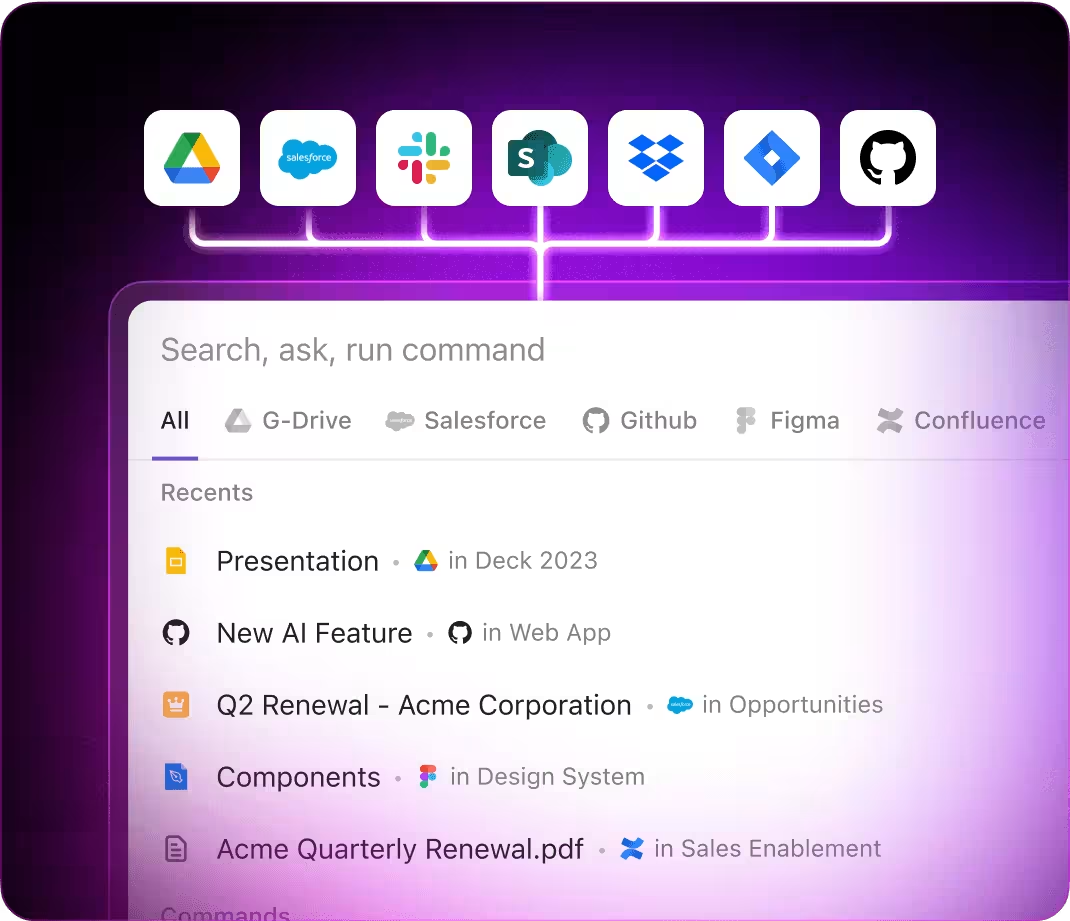
AI Applications
Leading 3 Ways AI Prompts Enhance Project Plan Adjustments
Speed up plan revisions, boost precision, and discover innovative strategies through AI assistance
From Plans to Project Updates
Project adjustments usually start with fragmented feedback and shifting priorities. ClickUp Brain organizes these inputs into clear, actionable project updates—right inside your ClickUp Docs.
Leverage ClickUp Brain to:
- Convert scattered change requests into structured update templates
- Produce fresh revision ideas informed by previous project data (using context-sensitive AI writing)
- With Brain Max, instantly explore historical project plans, team comments, and resource files to guide your next adjustment.
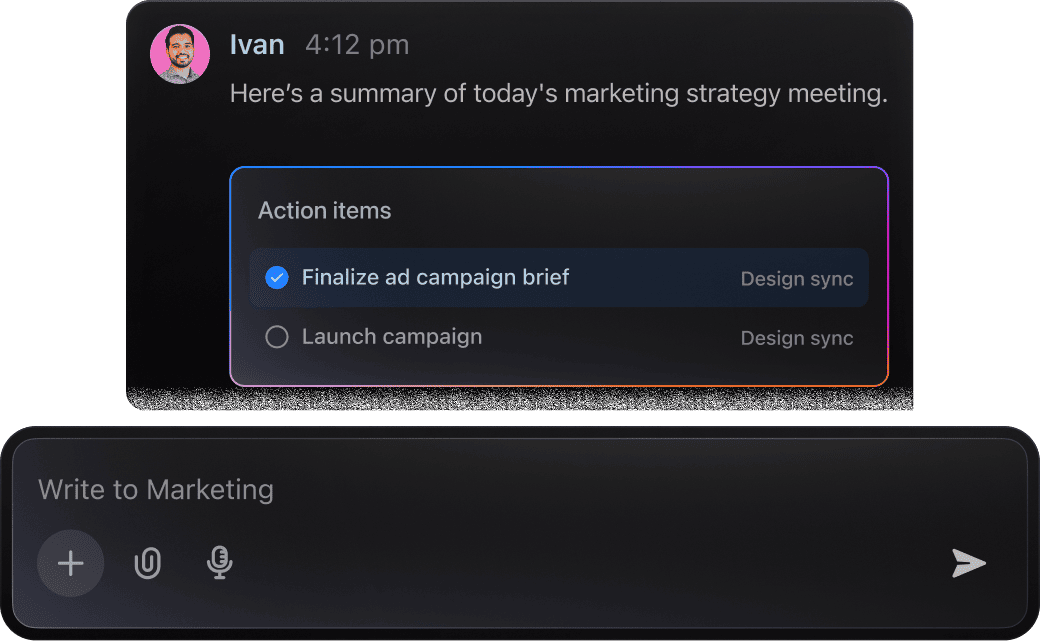
From Design Concepts to Engineering Execution
Engineering teams manage complex documentation and detailed feedback loops. ClickUp Brain empowers you to pinpoint key tasks, identify risks early, and create clear next steps from extensive notes.
Leverage ClickUp Brain to:
- Condense in-depth technical conversations captured in tasks or Docs
- Convert detailed design annotations into actionable engineering assignments
- Automatically generate defect summaries or project handoff briefs
- With Brain Max, effortlessly retrieve past design choices, component evaluations, or build discussions from your entire workspace—eliminating tedious searches through CAD documentation.
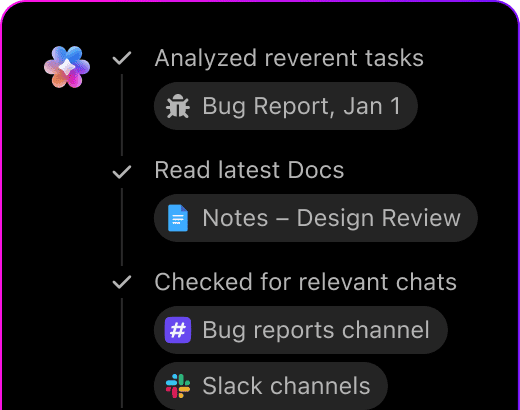
Adjusting Project Plans with ClickUp Brain
Managing project plan changes involves coordinating updates, tracking shifting priorities, and aligning teams. ClickUp Brain simplifies this process by extracting key adjustments and crafting clear communication.
Leverage ClickUp Brain to:
- Analyze meeting notes to highlight critical plan revisions
- Create update messages tailored to different stakeholders
- Convert feedback into actionable tasks or timeline shifts
- Brain Max enhances this by linking past project data and comparable adjustments, even in complex, evolving projects.
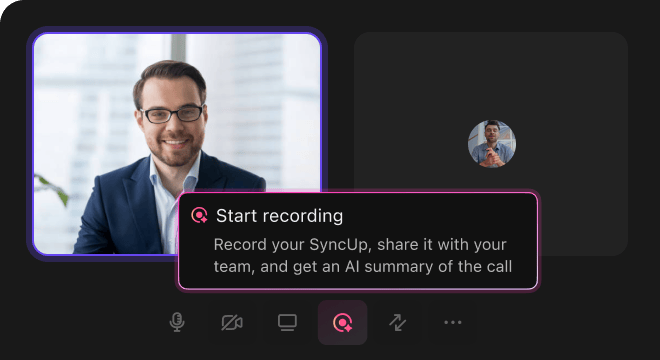
AI Advantages
How AI Prompts Revolutionize Project Plan Adjustments
Harness AI-driven prompts to enhance every phase of your project plan updates:
- Accelerate revisions: Quickly generate updated timelines, resource allocations, and task lists
- Reduce errors: Detect conflicts and dependencies by analyzing previous plans and team feedback
- Align your team: Create AI-crafted summaries and action points to keep everyone informed
- Make informed choices: Use prompts to gather risk assessments and compliance checks
- Adapt proactively: Uncover innovative solutions that keep your project on track.
All these capabilities integrate directly within ClickUp, turning prompt results into actionable docs, tasks, and dashboards that drive your projects forward.
Prompt Guidance
Crafting Effective Prompts for Project Plan Adjustments
Clear prompts drive precise project updates.

Define the project adjustment context clearly
Vague prompts produce broad suggestions. Specify details like project phase (e.g., “mid-sprint review” or “post-launch evaluation”), adjustment goals (e.g., “resource reallocation” or “timeline compression”), or team constraints (e.g., “remote collaboration” or “limited budget”).
Example: “Recommend task prioritization strategies for a software release delayed by two weeks.”

Use comparison prompts to weigh options
AI excels at contrasting alternatives. Use prompts like “compare option A vs option B” to assess different scheduling approaches, resource assignments, or risk mitigation plans.
Example: “Compare the impact of extending the deadline versus adding extra team members on project delivery.”

Frame prompts around specific project challenges
Treat your prompt as a problem-solving request. Instead of “Suggest plan changes,” focus on the issue:
Example: “Develop a revised timeline for a marketing campaign facing unexpected vendor delays.”

Specify desired output format
Need a Gantt chart outline, risk assessment table, or task list? Make it explicit. AI delivers better when the output style is clear.
Example: “Provide a bullet-point list of critical path adjustments with justifications.”
Optimize Project Adjustments with ClickUp Brain
ClickUp Brain goes beyond basic task tracking—it's your strategic partner for refining and adapting project plans effortlessly.





